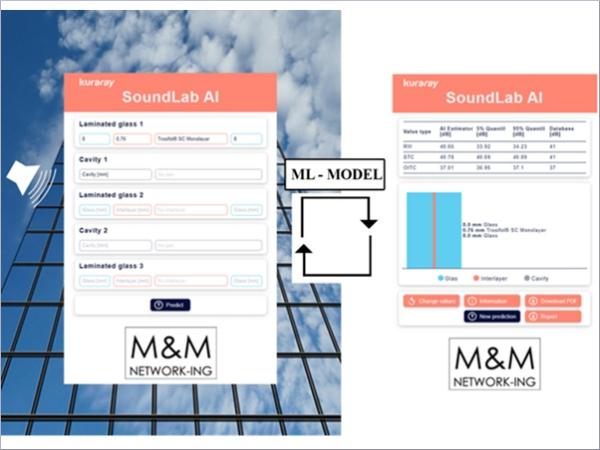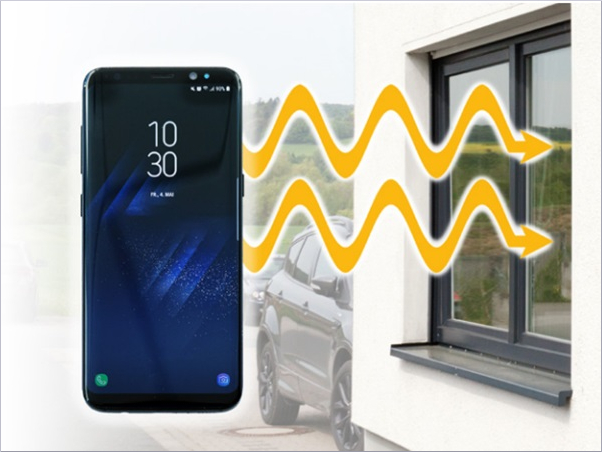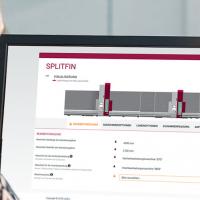This paper was first presented at GPD 2023.
Link to the full GPD 2023 conference book:
Authors:
- Dr.-Ing. Michael Anton Kraus, M&M Network-Ing UG
- Dr.-Ing. Michael Drass, M&M Network-Ing UG
- Henrik Riedel, M.SC. M&M Network-Ing UG
- Rafael Bischof, M.SC. M&M Network-Ing UG
- Leon Schmeiser, M.SC. M&M Network-Ing UG
- Ingo Stelzer, Kuraray Europe GmbH
Abstract
Modern architecture promotes a high demand for transparent building envelopes. Typically, glass façades are designed under a variety of objectives, one of which is to meet sound insulation requirements. Reliable and fairly accurate estimation of the sound insulation properties of different glass assemblies becomes time-consuming and difficult due to the complexity of experimental testing or numerical simulations. Therefore, this paper presents a Machine Learning approach for predicting the acoustic properties (weighted sound insulation value RW, STC, OITC) of different glazing systems. For this purpose, extensive research was conducted on various glazing systems consisting of different glass assemblies with varying glass, cavity and interlayer thicknesses as well as different types of interlayer and gas fillings.
Based on this, a sufficiently large database was created and employed to train and evaluate several machine learning algorithms. Finally, the best performing algorithm was used to be integrated into a comprehensive web-based program, the SOUNDLAB AI Tool, which has recently been published. This app provides rapid analysis and an accurate prediction for any glazing assembly, interlayer type and gas filling towards different sound insulation values using Machine Learning. Recent work of Kuraray and M&M considers Machine Learning (ML) based structural performance analysis of different glass systems under loadings and is released as StrengthLAB AI Tool. The aim is to provide designers, engineers and architects with effective and economically efficient tools to facilitate ecologic yet reliable planning in terms of acoustic and structural properties.
1. Introduction
Sound insulation is a critical aspect of modern building design, particularly for buildings located in noisy urban environments. Glass façades have become a popular choice for architects and designers seeking to create a visually stunning and transparent building envelope. However, the design of glass façades requires careful consideration of sound insulation requirements to ensure that occupants are protected from unwanted external noise. The traditional approaches for estimating the sound insulation properties of different glass assemblies (e.g. laminated glass (LG), insulating glass units (IGU) etc.) are time consuming and expensive, as they involve either experimental testing or numerical simulations due to the absence of a generally applicable theory. To overcome these limitations, this paper presents a machine learning approach for predicting the acoustic properties (weighted sound insulation value RW used in Europe, the Sound Transmission Class (STC), and Outdoor-Indoor Transmission Class (OITC) values used in the USA) of different glazing systems upon a massive database covering various glazing systems.
This case study reports about the ML project between Kuraray Europe GmbH and M&M Network-Ing UG, which led to the creation of the SOUNDLAB AI tool. This paper outlines the methodology used to develop and validate the SOUNDLAB AI tool and provides a detailed analysis of its performance.
2. Methods
This section briefly describes the methods used for developing the machine learning approach for predicting the acoustic properties of different glazing systems.
2.1 State-of-the Art and Database
Previous research has established that glass thickness, the use of laminated safety glass or special acoustic interlayers, and the use of insulating glass with cavities filled with gases such as argon and krypton are critical parameters that affect the acoustic properties of glazing systems [1, 2]. Despite this, there is still no efficient and generally applicable tool available to estimate the sound insulation performance of fenestration or facade systems accurately and conveniently [1, 2]. While laboratory testing remains the most reliable way to evaluate the acoustic performance of different glazing options, pragmatic approaches such as empirical, analytical, or numerical methods can provide useful preliminary evaluations of glass set-ups and their acoustic properties, particularly during the early design stages of a building project yet remain specific and limited in a broader application. Data-driven methods for sound insulation prediction of glazings except [1, 2] are not reported in the literature so far.
2.2 Database
Data-driven methods rely on high quality and diverse databases. The data used in this project were created from ca. 1,000 sound transmission loss (STL) measurements at certified laboratories across the globe by comparing the third-octave) in the range from 100 to 3,150 Hz) or octave (in the range from 125 to 2,000 Hz) band spectrum of the sound reduction index with a reference curve specified by DIN EN ISO 717-1 and covers different glass assembly features with varying glass, cavity and interlayer thicknesses as well as different types of interlayer and gas fillings. The database was augmented by the RW, STC, and OITC as targets for ML. Table 1 provides an overview of the features with their intervals within the database.
The database solely contains structured data with positive values for regression only. The only ML pre-processing step necessary was to compare the three methods “deleting categorical variables”, “label encoding” and “one-hot encoding” for the two categorical features.

2.3 Machine Learning Algorithms and Training
A correlation analysis was employed to investigate for features redundancy, which is not the case and all features are used in ML modelling in the further. The ML part of the project is conducted in two steps: (i) a ML algorithm scanning, and (ii) fine-tuning of the chosen ML algorithm via hyperparameter tuning. The first step is conducted to select the most suitable ML algorithm for the tool by evaluating the three algorithms “Linear Regressors”, “Decision Tree Regressors”, and “Random Forest Regressors”. Deep Learning algorithms along Neural Networks were not considered. For training, the entire dataset was split 60:40% into training and validation sets for model pre-selection, training and hyperparameter tuning. After training and testing the three algorithms using the acoustic database, the Random Forest Regressor algorithm was chosen for hyperparameter tuning based on model capability information obtained from prediction error plots and the cumulative distribution function (CDF) of model predictions vs. ground truth database values. More information and quantitative results for that step can be found in [1, 2].
2.4 Hyperparameter Tuning and Finalization of the best Random Forest Regressor
Based on the evaluation results, we selected the Random Forest Regressor algorithm as the best performing algorithm for predicting the acoustic properties of different glazing systems. The Random Forest Regressor algorithm was trained using the database of simulated acoustic properties, and its performance was validated using a separate test dataset. The algorithm was optimized using a grid search method with a 5-fold cross validation approach to find the best hyperparameters (max_depth, n_estimators, max_features, bootstrap, and min_samples_ split). More information and quantitative results for the hyperparameter tuning can be found in [1, 2].


2.5 SOUNDLAB AI Tool
The best performing Random Forest Regressor model was integrated into a web application, the SOUNDLAB AI Tool. The SOUNDLAB AI Tool includes a user-friendly web interface, allowing designers, engineers, and architects to easily input the required parameters and obtain the predicted sound insulation values. The program has been published and is available for use here:
Since its release in 2021, the web application meanwhile has undergone extensive testing for various building projects worldwide Kuraray internally but also from external experts, and has so far received very positive feedback for its reliability, user-friendliness, and speed.
3. Summary, Discussion, and Outlook
This case study presents the development of the SOUNDLAB AI Tool, an ML-based prediction tool for inferring sound insulation values of arbitrary glass assemblies. The ML tool is evaluated w.r.t. to different quality measures in Fig. 1. The error plot delivers a correlation coefficient of R² = 0.982 for validation data, indicating excellent performance in predicting sound insulation values. The CDF plot also proofs excellent agreement between measured and predicted values. A residual plot and a grey bar representing the customer's specification of ±1dB for RW showed that most training and validation data points were within the confidence band of ±1dB, meeting the customer's specification. Finally, the hyperparameter-tuned model was tested to predict sound insulation values on an unseen dataset of 20 different glazing set-ups provided by Kuraray Europe GmbH. The model showed very good predictions with an R² = 0.947 for the test data and gives evidence for generalization abilities of the SOUNDLAB AI tool.
In summary, the tool is a suitable and costeffective method for making predictions of the sound insulation of any glass assembly available online for a broad audience.
The SOUNDLAB AI tool will be further developed by training generative conditional neural networks [4] to allow for forward and inverse predictions of sound insulation and/ or glazing set-ups that meet sound insulation requirements. These investigations, along with the new version of SOUNDLAB AI, will be released in 2024. Furthermore, in 2023 we will release the StrengthLAB AI Tool for performing artificial intelligence-based structural performance analysis of different glass systems under loadings.
Literature
[1] Drass, M., Kraus, M. A., Riedel, H., & Stelzer, I. (2022). SoundLab AI-Machine learning for sound insulation value predictions of various glass assemblies. Glass Structures & Engineering, 7(1), 101-118.
[2] Drass, M., Kraus, M. A., Riedel, H., & Stelzer, I. (2022). SOUNDLAB AI Tool–Machine Learning zur Bestimmung des bewerteten Schalldämmmaßes. ce/ papers, 5(1), 147-156.
[3] Kraus, M. A., & Drass, M. (2020). Artificial intelligence for structural glass engineering applications—overview, case studies and future potentials. Glass Structures & Engineering, 5(3), 247-285.
[4] Balmer, V. M., Kuhn, S. V., Bischof, R., Salamanca, L., Kaufmann, W., Perez-Cruz, F., & Kraus, M. A. (2022). Design Space Exploration and Explanation via Conditional Variational Autoencoders in Meta-model based Conceptual Design of Pedestrian Bridges. arXiv preprint arXiv:2211.16406.
















